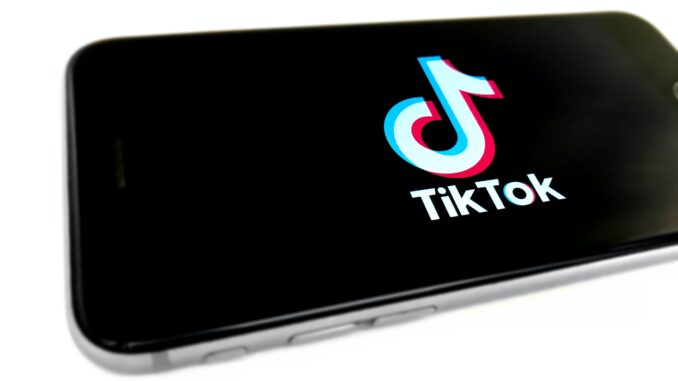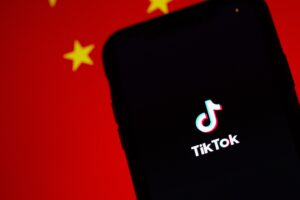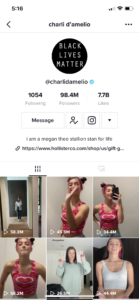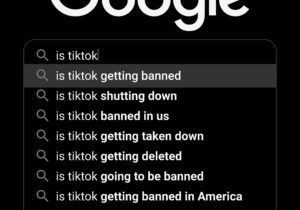
Within the first quarter of 2020, internet social platform TikTok was downloaded over 315 million times, setting the record for the most downloads of any application in a single quarter (Keselj, 2020).
TikTok has unquestionably emerged as one of the biggest social media platforms around the globe, binding the interconnectivity of internet through its transformative effects on the dissemination of information and entertainment. The monopolistic nature of TikTok has assisted in establishing its immense agency within the transformation of contemporary sharing media.
This internet essay will firstly provide an overview of TikTok as one of the leading social platforms and frame it within both a historical and contemporary context, illustrating how it is transforming internet interaction. I will then analyse TikTok’s business model and its internet ecology, demonstrating its impact within the social media sphere. Lastly, a discussion of TikTok’s regulatory debates will be evaluated to frame the application within a political framework.
What is TikTok?
TikTok is a social media platform owned by Chinese parent company ByteDance Ltd., which accessibly shares short-form videos ranging from 3 to 60 seconds, with a mission to “inspire creativity and bring joy” (Our Mission, n.d.). The ‘For You Page’ is the main attraction on TikTok (Herrman, 2019), aligning with what Jarret (2014) describes as “database of intention,” by creating a personalised algorithm by making assumptions as to what you would want to watch. However, TikTok did not begin as TikTok and has a rather complicated short 6-year history.
TikTok’s Beginnings to Now
In 2014 the social application Musical.ly was launched which focused on sharing short user-generated videos showcasing users lip syncing to songs (Bresnick, 2019). Two years after its launch, internet technology company ByteDance founded Douyin, a similar platform to Musical.ly that initially launched strictly to a Chinese audience with willingness to expand globally.

Image: Solen Feyissa, Unsplash, Some Rights Reserved
The Beijing operated ByteDance went on to purchase Musical.ly in late 2017 for a reported $1 billion USD, according to the Wall Street Journal, allowing ByteDance to extend their market share internationally. Musical.ly was relaunched as TikTok in August of 2018 to a larger community with already existing accounts and being identical in interface and function to that of Douyin, however now allowing access worldwide.
The platform has had immense success globally since it was released just over two years ago to the public. TikTok has maintained unparalleled growth in the Asian and Western markets, accumulating an audience of over 700 million as of July 2020 (Ryan, Fritz & Impiombato, 2020). Sheryl Sandberg, the Chief Operating Officer of Facebook, has admitted worries about the threat of TikTok due to its unmatched fast paced growth of users, happening at a pace that Facebook never experienced to even a marginally similar extent (Hamilton in Lim, 2020).
The below video by the ABC News gives further insight into TikTok’s success within the Australian digital landscape. Whilst some statistics are out of date now being the video was posted in 2018, all of the ideas embedded regarding TikTok’s dominance remain the same.
The rapid global dominance of any social platform is always inherently situated to social and political questioning. TikTok is now hurdled with extreme scepticisms in regard to security concerns and its political affiliation with the Chinese government.
Karppinen (2017) highlights that digital rights and generic human rights must have a direct affiliation, establishing data which is collected from online platforms as secure as outlined within the terms and conditions.
The Trump Administration announced an executive order on August 6th this year to restrict United States operations of Chinese internet giants in response (Economist Intelligence Unit N.A. Incorporated, 2020). Additionally, India banned TikTok within their country on June 29th of this year due to cyber security issues (Mableannchang, 2020). TikTok’s political and security issues are imperative to analyse to place it within the contemporary social networking climate, and thus will be discussed further in detail later in this essay.
An Authentic Business Model
A successful business model can be defined through the ability to attain value through the foundations and structures in a firm’s operating procedures (Mikhalkina & Cabantou, 2015). TikTok’s parent company ByteDance has been able to successfully establish a business model which has enacted as an agent in TikTok’s authority of power within the social media framework.
Boyd (2010) analyses that our use of social platforms is transformative within the sharing ecology framework, especially those who are able to supress orthodox social boundaries between celebrities and regular folk. TikTok has successfully capitalised on Boyd’s notion by flattening the distinction between ‘us’ and ‘them’ through its ‘For You Page’ and algorithm.

Image: Louisa Haskins, All Rights Reserved
Artificial Intelligence (AI) acts as a primary role within the model of TikTok online platform, where AI generated algorithms are used to optimise content creation, content curation and content recommendation.
Unlike Instagram and Facebook where an individual’s follow is reliant on “social posturing,” as voiced by Snapchat CEO Evan Spiegel (Lim, 2020), TikTok’s algorithm allows video content of any creator big or small to be seen by a wide range of people, regularly rising users into abrupt internet stardom. Keselj (2020) argues that TikTok’s promotion of all users and not just those who are famous makes going viral significantly easier.
For example, Connecticut born Charli D’Amelio began posting dancing videos on her TikTok account in 2019 when she was only 14 years old and a year later on March 25th at age 15, she became the most followed user on the platform with over 41 million followers (Kennedy, 2020). Today, D’Amelio has 98.4 million followers, almost 30 million followers in front of the second leader Addison Rae. The click-worthy video below is D’Amelio being interviewed by American television host Jimmy Fallon in March of this year, explaining the story of her success.
With TikTok’s user-friendly interface, the distinction between the entertainer and entertained becomes definitively blurred. All users are able to create videos themselves and watch other videos through their personalised ‘For You Page’ and from those who they follow. Thus, the platforms unique and innovative business model design has placed it at the frontier of the new wave of social media (Keselj, 2020).
TikTok’s Internet Ecology
An internet ecology as defined by Maes in Looi (2002), is a collection of people and engines whom preform activities which effect a specific company, however, are not dependent upon the performance of the company. TikTok as a rather new multinational social video sharing platform has been isolated at the forefront of its kind due to immense popularity. TikTok’s is also placed within the generic social media sphere, with a wider range of competitors who also act as platforms for social interaction and sharing.
Many other social video sharing applications have attempted to dethrone TikTok due to its indeterminate future, however none have been successful. TikTok has three direct competitors within the social video sharing platform according to Forbes, those being (Bossi, 2020):
- Triller is an American owned video making platform similar to TikTok which allows users to post videos through the application whilst capitalising on an AI business model. As of August 2020, Triller had accumulated 250 million downloads in total, compared to TikTok’s 689 million global monthly active users in just July 2020.
- Likee is a Singapore-based short-film creation and sharing service who as of August 2020 reached 150 million users globally, which is unmatched to TikTok’s astronomical users.
- Lastly, Byte, the application which has been labelled as Vine 2.0 allows users to create 15 second looping videos. In January of 2020, Byte had been downloaded just over 1 million times, in comparison to TikTok which was downloaded 104.7 million times, being the most downloaded application in that month.
Facebook, Instagram, YouTube, Twitter and Snapchat are a part of TikTok’s more distanced competitors within the social media sphere, all who have been major dominators. However, according to Forbes, TikTok became the second most downloaded application on both iOS and Android in 2019, also predicting it may take over Instagram for its successful marketing perspective (Forest in Lim, 2020).
Below is an infographic illustrating TikTok’s internet ecology:

Within the Political Sphere
The undenounced global success of TikTok within such a short period of time has led it to be subject to many political debates. Major concerns have been raised over the company’s relationship with the Chinese government and the inherent influence Chinese policy may sustain within the application. Reddit CEO Steve Huffman has even come out and labelled TikTok as “Chinese spyware” (Hamilton in Lim, 2020), extending on the rhetoric surrounding its security issues.

Image: visuals, Unsplash, Some Rights Reserved
As previously mentioned, The Trump administration has been a large perpetrator in the demise of TikTok, suggesting that TikTok as a Chinese owned corporation cannot be trusted which caused an execute order in restricting the application within the United States. The United States’ targeting of high profile Chinese operated companies acts to further deteriorate the relationship between both countries (Economist Intelligence Unit N.A. Incorporated, 2020).
The discussion to ban TikTok in the United States is also suggestive or reciprocity, as many United States social medias have been blocked from the Chinese markets for years (Economist Intelligence Unit N.A. Incorporated, 2020). India was the first country to ban TikTok, which resulted in large financial losses for the ByteDance of up to USD$500,000 within a single day (Grahamearnshaw, 2019).
However, are the concerns surrounding Chinese Policy and TikTok just an excuse for xenophobic dog whistling more than an actual concern of data protection?
TikTok representatives in both the United States and Australia have denied that the application shares any information further than what is stated in its ‘Terms of Use’ (Floreani, 2020). Australian Prime Minister Scott Morrison has also been involved within the commentary over TikTok’s security issues, voicing:
“There’s nothing at this point that would suggest to us that security interest are being compromised, or Australia citizens are being compromised. We’ll obviously keep watching them, but there’s no evidence to suggest to us today that [a ban] is a step that is necessary.”
Despite TikTok’s defamation within the world of politics, the social media application has become a positive playground for the younger generation to engage in political debate (Lorenz in Lim, 2020). Social activism plays a large role within the plethora of TikTok, seeing many creators engage within the Black Lives Matter movement in the wake of the death of George Floyd and for the 2020 United States Presidential Election. For Example, a Trump rally held in Tulsa, Oklahoma on June 20 of this year was disrupted in large numbers by TikTok users who claimed tickets to ensure the seats were empty.
In Conclusion
TikTok has undoubtedly become one of the biggest and most influential social platforms on this century, paving a way for a new era of social interaction online. The Chinese owned platform has been able to capture an audience which directly rivals Silicon Valley media giants. Furthermore, despite many political concerns TikTok has still been able to become one of the fastest growing social platforms globally. Thus, the combination of both a successful business model and prosperous internet ecology have assisted in TikTok achieving isolated success within the social video sharing platform.
SID: 480380982
References
Bossi, A. (2020, August 24). There are three clear TikTok competitors, but none are close to dethroning it. Retrieved from https://www.forbes.com/sites/andreabossi/2020/08/24/there-are-3-clear-tiktok-competitors-but-none-are-close-to-dethroning-it/?sh=171efd551783
Boyd, D. (2010). Social Network Sites as Networked Publics: Affordances, Dynamics, and Implication. Networked Self: Identity, Community, and Culture on Social Network Sites, 39-58. Retrieved from https://www.researchgate.net/publication/265035948_Social_Network_Sites_as_Networked_Publics_Affordances_Dynamics_and_Implications
Bresnick, E. (2019). Intensified Play: Cinematic study of TikTok mobile app. University of Southern California. Retrieved from https://www.researchgate.net/publication/335570557_Intensified_Play_Cinematic_study_of_TikTok_mobile_app
Economist Intelligence Unit N.A. Incorporated. (2020). US government moves to ban TikTok and WeChat (Geographic Overview). Country Report: United States. Retrieved from https://go-gale-com.ezproxy1.library.usyd.edu.au/ps/i.do?id=GALE%7CA634093701&v=2.1&u=usyd&it=r&p=ITOF&sw=w
Floreani, S. (2020, July 9). The Australian government’s concern about TikTok is not just about data ethics – it’s about politics. Retrieved from https://www.theguardian.com/commentisfree/2020/jul/09/the-australian-governments-concern-about-tiktok-is-not-just-about-data-ethics-its-about-politics
Grahamearnshaw. (2019, April 2014). India’s TikTok ban causes daily $500,000 loss. China Economic Review.Retrieved from http://search.proquest.com/docview/2212985634/
Herrman, J. (2019, March 10). How TikTok Is Rewriting the World. Retrieved from https://www.nytimes.com/2019/03/10/style/what-is-tik-tok.html
Jarret, K. (2014). A database of intention?. In Konig, R. & Rasch, M. (Eds.), Society of the query reader: Reflections on search web, 16-29.
Karppinen, K. (2017). Human rights and the digital. In H. Tumber & S. Waisbord (Eds.), Routledge companion to media and human rights, 95-103. Routledge.
Kennedy, M. (2020). ‘If the rise of the TikTOk dance and e-girl aesthetic has taught us anything, it’s that teenage girls rule the internet right now’: TikTok celebrity, girls and the Coronavirus crisis. European Journal of Cultural Studies, 23(6), 1069-1076. doi: 10.1177/1367549420945341
Keselj, M. (2020, October 7). The Future is Tiktok. Retrieved from https://harvardpolitics.com/the-future-is-tiktok/
Lim, Y. (2020). The PESTEL Model Application to Ok Boomer and TikTok from a Public Relations Perspective. Journal of Media and Research, 13(2), 94-110. doi: 10.24193/jmr.37.6
Looi, C. (2000). A Learning Ecology Perspective for the Internet. Educational Technology, 40(3), 56-60. Retrieved from https://www.jstor.org/stable/44428604
Mableannchang. (2020, July 10). TikTok deleted 49 million ‘rule breaking’ videos. China Economic Review. Retrieved from http://search.proquest.com/docview/2421644747/
Mikhalkina, T. & Cabantous, L. (2015). Business Model innovation: How Iconiv Business Models Emerge. In C. Baden-Fuller & V. Mangematin (Eds.), Business Models and Modelling: Advancemes in Strategic Management, 33, 59-95. doi: 10.1108/s0742-332220150000033024
Our Mission. (n.d.). Retrieved November 15, 2020, from https://www.tiktok.com/about?lang=en
Ryan, F., Fritz, A., & Impiombato, D. (2020, September 8). TikTok and WeChat: Curating and controlling global information flows. Australian Strategic Policy Institute. Retrieved from https://www.aspi.org.au/report/tiktok-wechat

